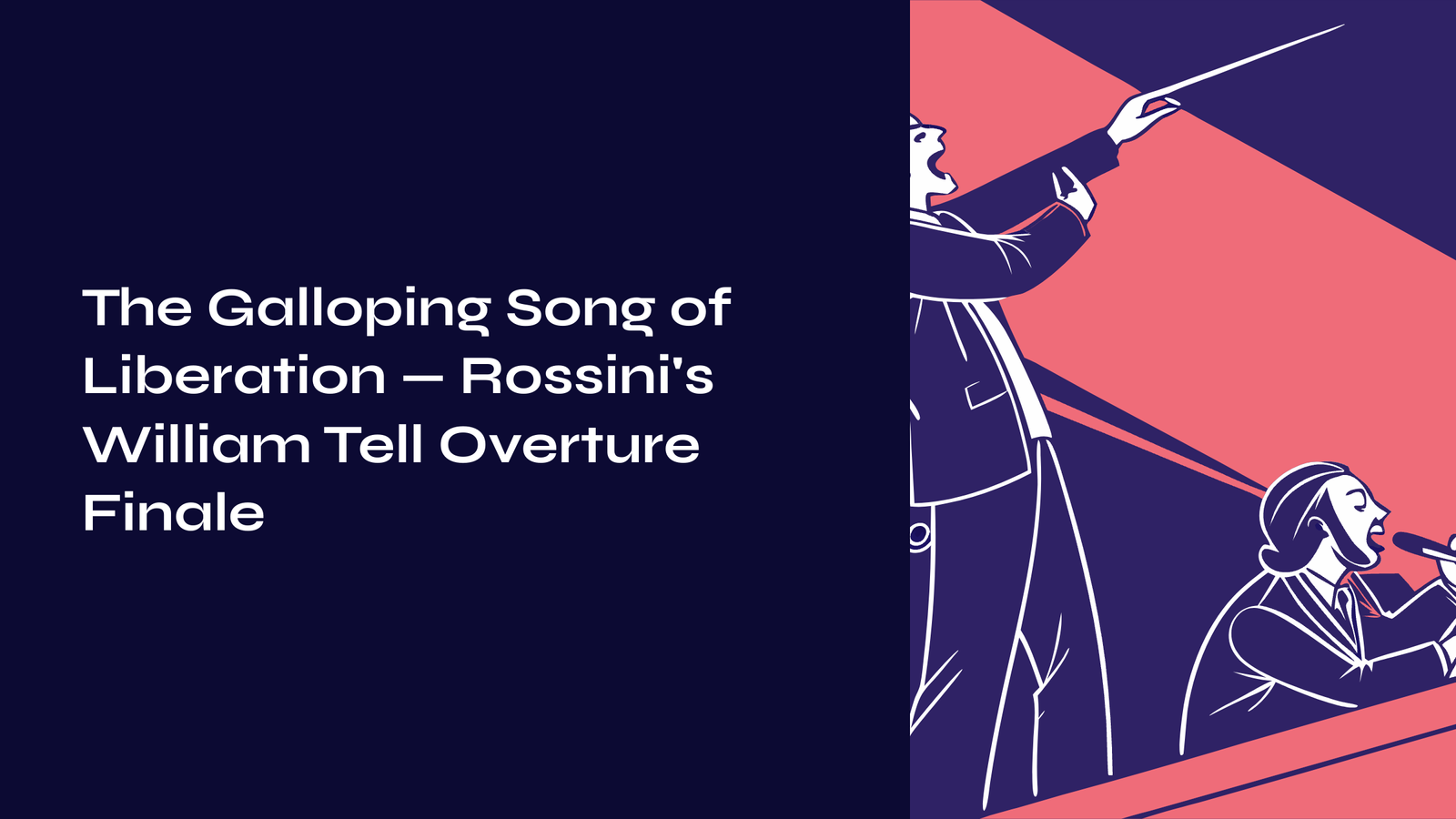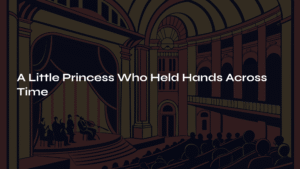Table of Contents
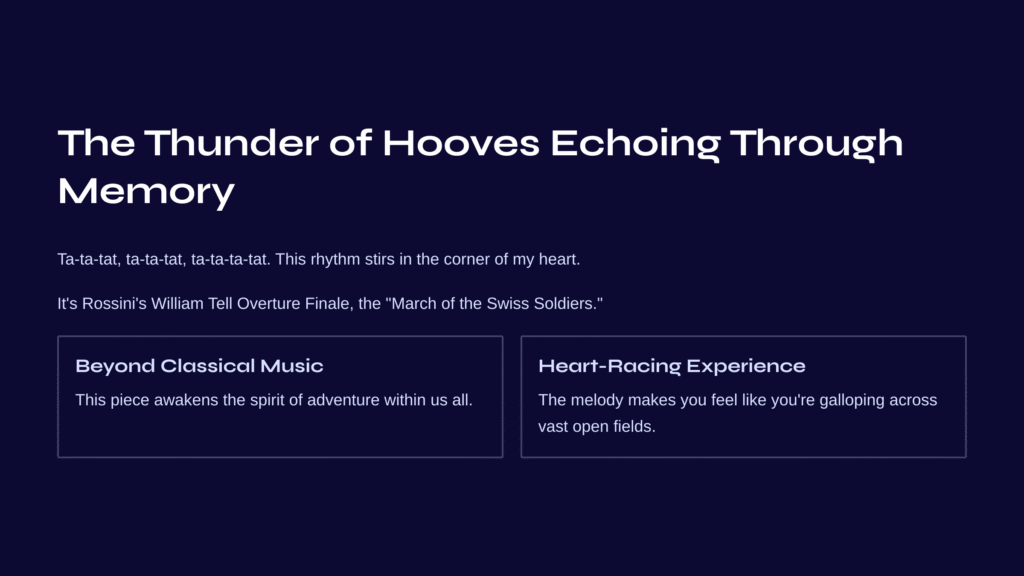
The Thunder of Hooves Echoing Through Memory
There was a moment when a rhythm began stirring in a corner of my heart. Ta-ta-tat, ta-ta-tat, ta-ta-ta-tat. At first, I couldn’t identify that sound, but it gradually became clearer until it transformed into a thrill that enveloped my entire being. It was Rossini’s William Tell Overture Finale, the “March of the Swiss Soldiers.”
Have you ever experienced something like this? That instant when a familiar melody reaches your ears and your heart begins to race, as if you’re suddenly galloping alongside a cavalry across vast open fields? This piece transcends mere classical music—it possesses a mysterious power to awaken the spirit of adventure and courage that lies dormant within us.
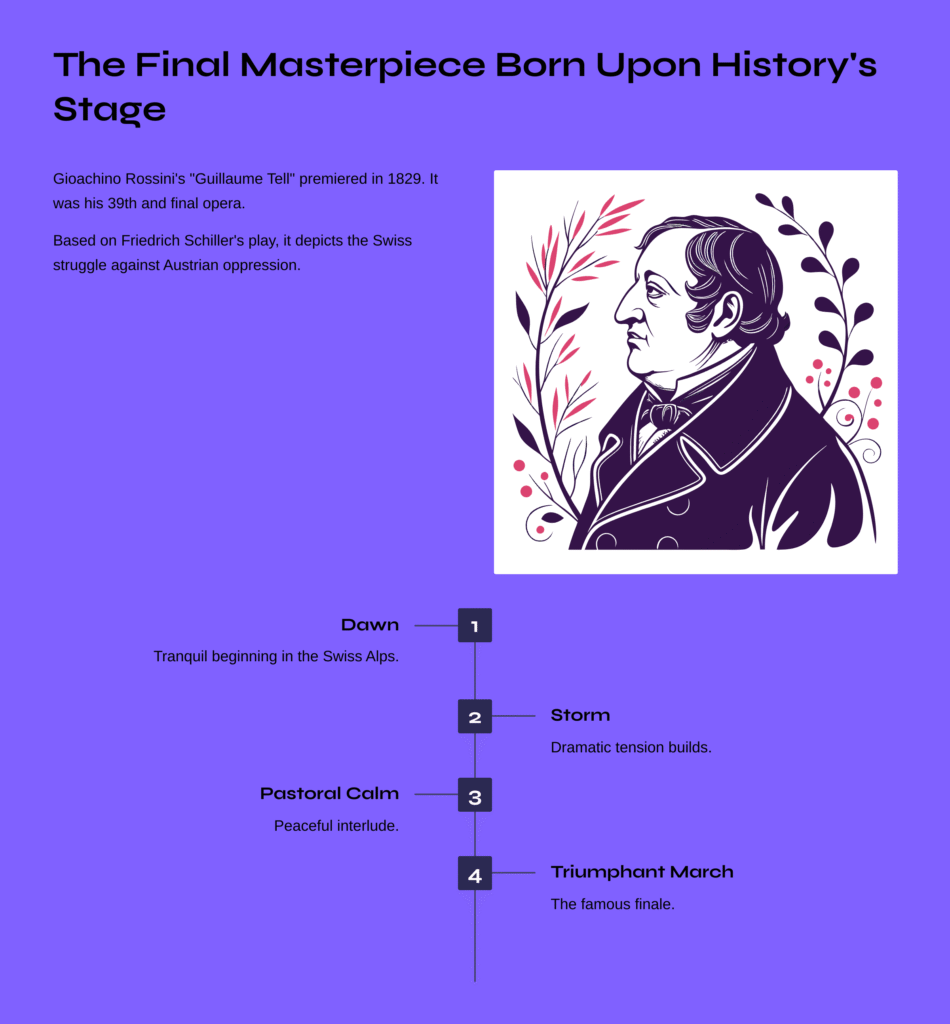
The Final Masterpiece Born Upon History’s Stage
Gioachino Rossini’s (1792-1868) opera “Guillaume Tell” (William Tell), premiered at the Paris Opera in 1829, was his final operatic work. Though only 37 years old, Rossini had already composed 39 operas, yet after this masterpiece, he would forever retire from operatic composition. In this work, into which he seemed to pour his very soul, he used the story of Switzerland’s legendary hero William Tell to musically portray humanity’s yearning for freedom and liberation.
Based on Friedrich Schiller’s play, this opera depicts the struggle of the Swiss people against Austrian oppression. Due to its massive four-hour length, it was shortened almost immediately after its premiere, but the overture alone has survived in its complete form and continues to be beloved today.
As Berlioz described it as “a symphony in four parts,” this overture paints a musical picture of a day in the Swiss Alps. Beginning with the tranquility of dawn, progressing through a storm and pastoral calm, it culminates in a triumphant march—a perfect musical epic in itself.
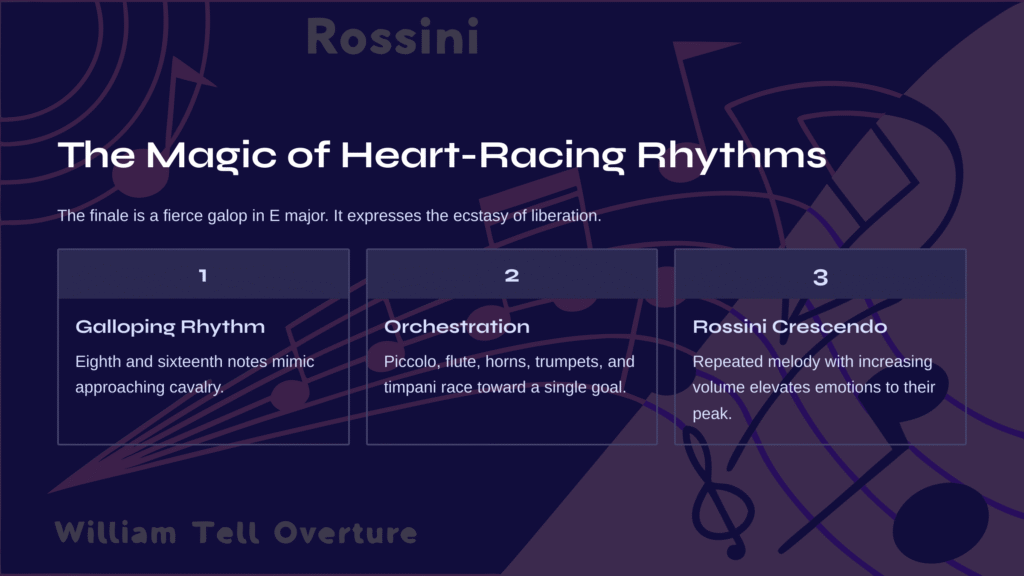
The Magic of Heart-Racing Rhythms
The final section of the William Tell Overture, the “March of the Swiss Soldiers,” is a fierce galop written in E major. This finale is no simple march. It is a musical explosion expressing the ecstasy of a people liberated from oppression.
The rhythm that begins quietly resembles the sound of approaching hooves from a distance. The distinctive “galloping rhythm” created by eighth and sixteenth notes perfectly mimics the movement of an approaching cavalry. The secret of this rhythm lies in its repetition. The same pattern repeats while varying slightly in dynamics and timbre each time, creating the illusion that listeners are actually riding and galloping alongside the horses.
The orchestral arrangement contributes significantly to the piece’s overwhelming effect. The sharp melodies of piccolo and flute, the heroic calls of horns and trumpets, the majestic harmonies of trombones, and the rhythmic propulsion created by timpani and cymbals—every instrument races toward a single goal, embodying the joy of liberation itself.
Structurally following an Intro-A-B-A-Coda form, the piece is permeated by Rossini’s signature “Rossini crescendo” technique. This unique compositional method, where the same melody is repeated with gradually increasing volume and orchestral complexity, elevates the listener’s emotions to their peak.
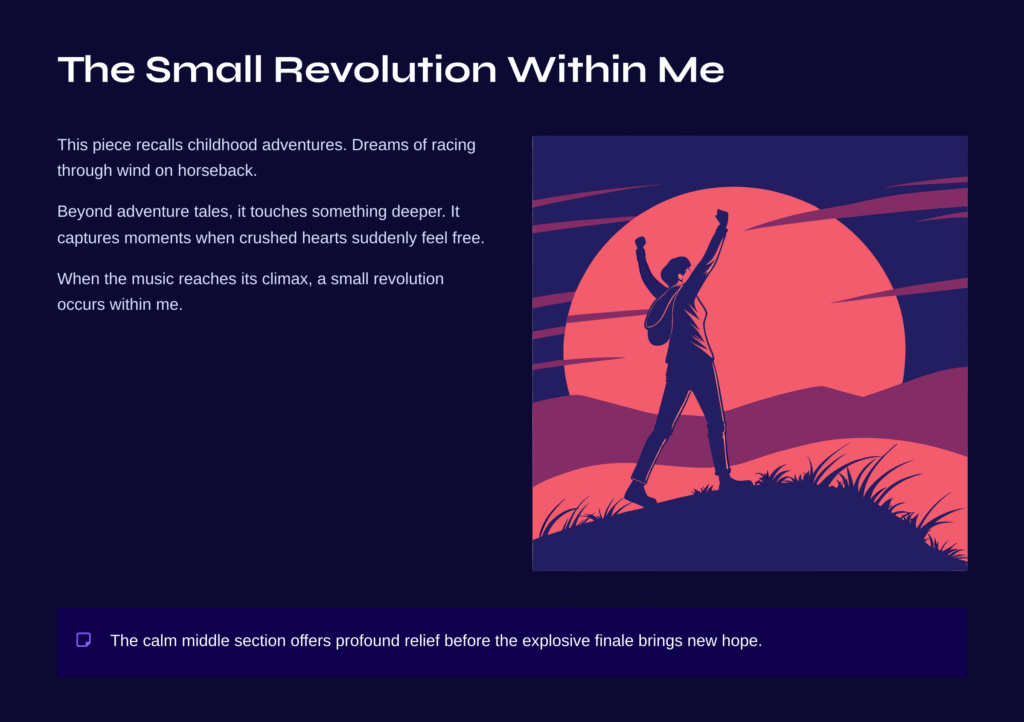
The Small Revolution Within Me
Every time I hear this piece, I recall the adventures I dreamed of in childhood. Imaginings of racing through the wind on a horse leaping toward the sky, dreams of becoming a brave knight fighting for justice. This is likely the image etched in many minds since the piece became the theme for “The Lone Ranger.”
Yet beyond simple adventure tales, this music touches something deeper within us. It captures those moments when hearts crushed by daily burdens suddenly feel free, when abandoned dreams come back to life. When the music reaches its climax, I feel a small revolution occurring within myself.
There’s a particular moment in the middle section where the melody briefly becomes calm. In this passage, like catching one’s breath during an intense gallop, I always feel profound relief. And from the explosive energy that resumes in the finale, I discover new hope. Isn’t this the healing power that music possesses?
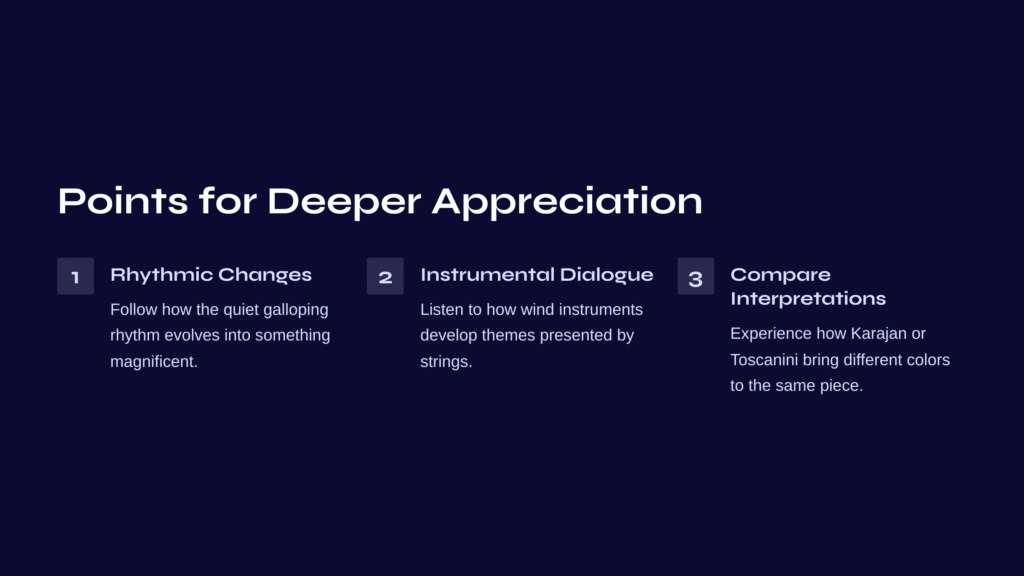
Points for Deeper Appreciation
I’d like to suggest several points to help you enjoy this piece more richly.
First, pay attention to the rhythmic changes. Follow how the quietly beginning galloping rhythm gradually becomes more complex and magnificent. It’s as if the music depicts the evolution from a single horseman into a massive cavalry.
Second, listen to the dialogue between instruments. The process where wind instruments take up and develop themes presented by strings, which brass instruments then proclaim majestically, evokes the image of people’s voices growing ever louder.
Third, I recommend comparing interpretations by master conductors like Karajan or Toscanini. You’ll experience how the same piece shows completely different colors depending on the conductor. The individuality of each conductor particularly emerges in tempo changes and accent treatment.
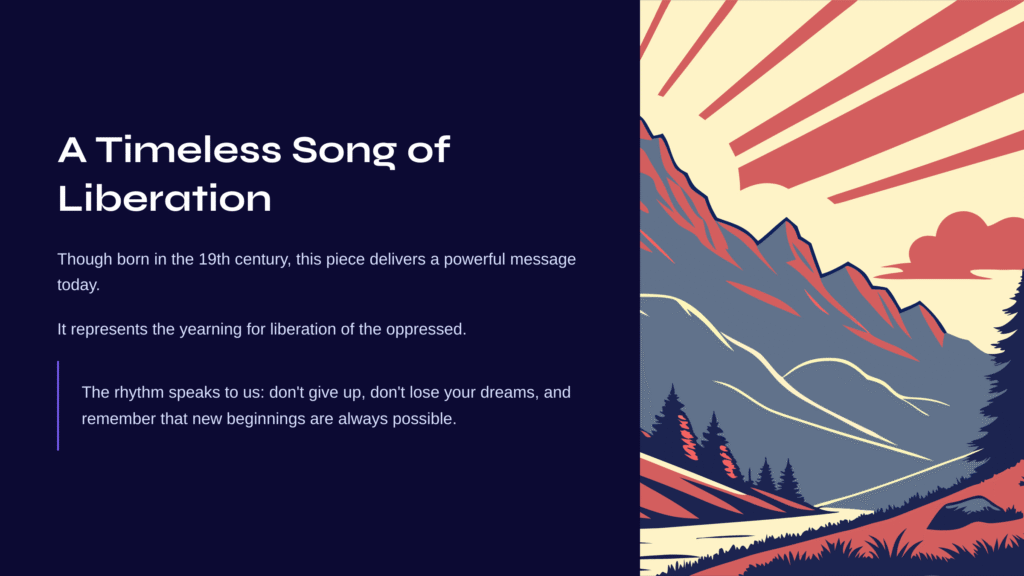
A Timeless Song of Liberation
Though Rossini’s William Tell Overture Finale was born in the 19th century, it still delivers a powerful message to those of us living in the 21st century. It represents the yearning for liberation of the oppressed, while simultaneously serving as a hymn to the courage and hope that sleep within the human spirit.
Within this music lie the rugged Alps of Switzerland, the cries of people marching toward freedom, and the joy of victory. But most importantly, it captures the moment when all of these are reborn within each of our hearts. The rhythm that lingers in our ears even after the music ends speaks to us: don’t give up, don’t lose your dreams, and remember that new beginnings are always possible.
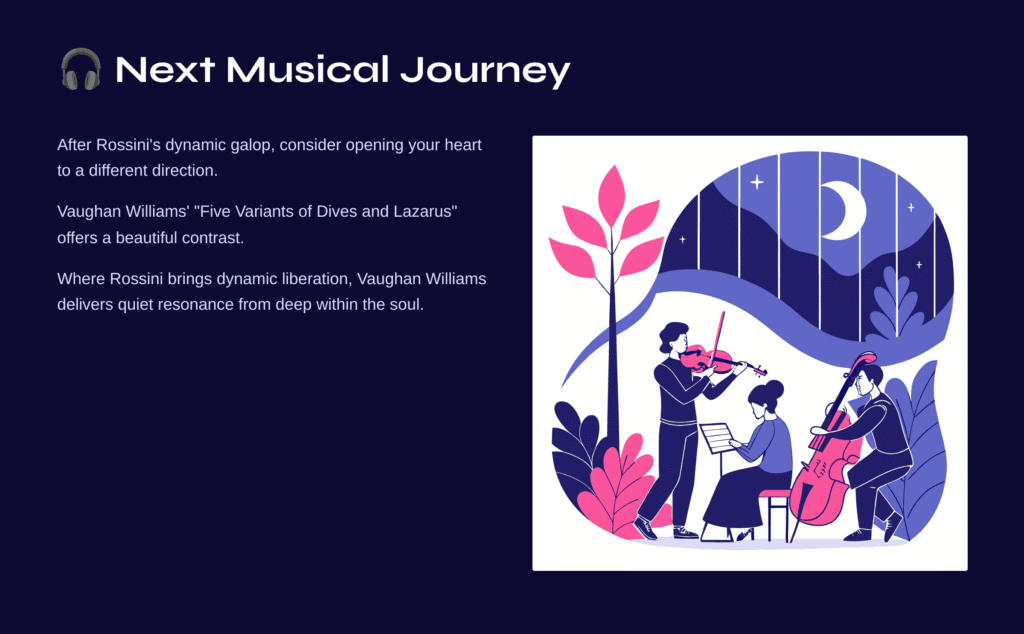
🎧 Next Musical Journey
Having fully savored the joy of liberation from Rossini’s dynamic galop, how about opening your heart to a slightly different direction?
The next piece I’d like to introduce, Vaughan Williams’ “Five Variants of Dives and Lazarus,” contrasts beautifully with Rossini’s brilliant orchestration. Using string orchestra alone, it paints the simple yet profound emotions of English folk song. If you felt dynamic liberation in Rossini, with Vaughan Williams you’ll experience the quiet resonance that emerges from deep within the soul.
Both pieces are masterworks that, in their own ways, sublimate fundamental human longing into music. The journey from Rossini’s extroverted energy to Vaughan Williams’ introspective depth becomes, in itself, a complete musical pilgrimage.
